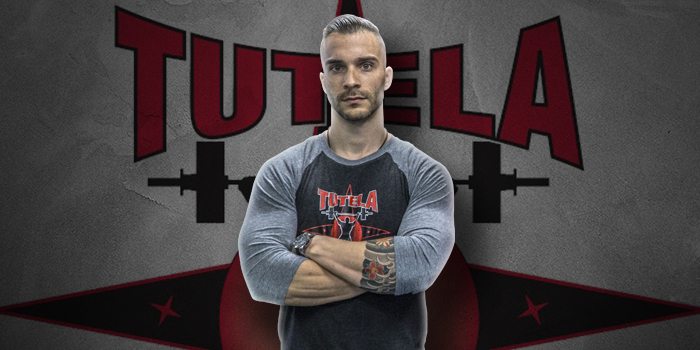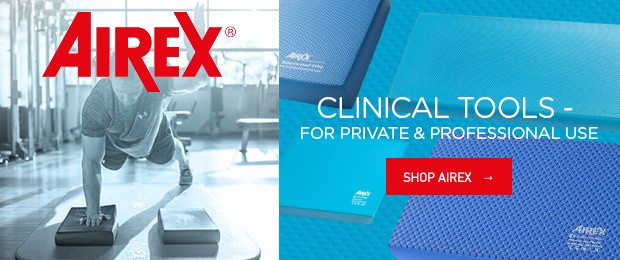
If you’ve been following me for some time, you know that my philosophy when it comes to training high school athletes is to get them strong. But getting them strong doesn’t simply mean to improve their bench, squat, and deadlift, although that is a vital component. Many coaches out there get caught up in just pushing numbers on their athlete’s big lifts and ignore specific imbalances and weaknesses. When this happens we end up creating even greater muscular imbalances and leave weak links in the chain. This only sets up our athletes for a greater risk of injury in both the weight room and on the playing field.
RECENT: Strong, Shredded, and the Ability to Perform Pain-Free
I get it. If you are coaching a weight room filled with 40, 50, or 70 athletes, it’s hard to address specific areas of weakness individually. However, high school athletes, for the most part, have very similar weaknesses and needs. A good way to address this collectively is to program unilateral work. This may sound simple, and if it does you’d probably be shocked if you walked into a high school weight room to see how rare it is for athletes to train unilaterally. Most coaches program the big three (cleans, military presses, pulldowns) and that’s about it. It is our job to be more efficient in our programming, and here is why unilateral work plays such a huge roll in that.
Balance
First off, unilateral exercises create balance. They help develop an athlete’s balance by addressing the small stabilizers in the joints, which are commonly untrained in most young men and women. Placing an emphasis on upper and lower body single-arm and single-leg work will help develop stabilizers in the shoulders, elbows, wrists, hips, knees, ankles, and feet.
Core Stability
When working with one limb at a time, we can place more of an emphasis on developing the core. For instance, if we’re using a one-arm flat dumbbell press, you’ll need to focus on keeping the core braced and breathing throughout the entirety of the set. Remember that the main function of the core is to stabilize the spine while the extremities are moving. A stronger core leads to a stronger athlete.
Flexibility
Certain exercises can help improve flexibility. A Bulgarian split squat, for example, will dynamically develop more flexibility in the quads and hip flexors, and single-leg Romanian deadlift can help improve the flexibility of tight hamstrings — all while developing strength and stability! That’s an incredible bang for your buck.
Speed
Enhancing strength, working out imbalances, developing the core, and improving flexibility will all help an athlete develop greater speed. Unilateral training will help do all of that. Sprinting in itself is also a unilateral movement. Both limbs are never on the ground at the same time when sprinting, so why wouldn’t you address this in your training? For that reason, unilateral work is highly effective for developing sprinting speed.
Strengthens Weaknesses and Improves Imbalances
Many athletes (and regular people for that matter) suffer from muscular imbalances, meaning one limb is stronger than another. It’s crucial to bring up these imbalances to develop better overall strength. There are also specific weaknesses that can’t be targeted with bilateral exercises. For example, a Bulgarian split squat is going to address weak hip flexors way more than a back squat can. When we address these weaknesses it helps bulletproof our athletes while improving their overall strength simultaneously.
Reduces Injury Potential
Due to the added strength, stability, and flexibility that unilateral training can elicit, we can greatly reduce our athletes' potential for injury. Obviously, we all want to see our guys and girls stay healthy and on the field, so if not for any other reason, consider this when designing your template.
Conditioning and Muscle Growth
Single-arm and single-leg training will also emphasize hypertrophy and create a conditioning effect. For example, we can do a high rep set of a heavy one-arm dumbbell row that will help us pack on more muscle due to the added volume and generate a conditioning effect from the high rep set, which you’ll essentially have to do twice. With work like that also comes mental toughness, which is imperative for any athlete.
Now, before you go ahead and start programming a shit-ton of unilateral work, please don’t completely steer away from bilateral training. By no means am I saying you shouldn't squat and deadlift. What I am saying is that unilateral training is necessary to add to any training arsenal if your goal is a stronger, faster, more well-rounded, and balanced athlete — which is hopefully everyone’s goal. And if you’re training a high volume of kids at once, you may be thinking you don’t have enough time to prioritize this stuff. Well, it’s a priority, and you need to come up with a way in which you can train your athletes more efficiently. You can be more time efficient if you program your accessory or unilateral work in a circuit fashion, after your big lift for the day. For example, if you are kicking off a lower body session with a squat, you can follow it up with split squats, single-leg RDLs, and some type of core exercise like a hanging knee raise to keep everyone moving. This is also a nice way to develop a base level of conditioning simultaneously.
This approach is one I used when I was working as the head strength coach for a football program here in New Jersey, and we sometimes had 80 kids in the off-season. The important thing is that you keep your athletes moving and get them the work they need. This takes effort but can absolutely be done. Who doesn’t like a little controlled chaos in their weight room anyway?
Once you start to program unilateral training into your athlete’s arsenal, I guarantee you will notice a difference in their performance immediately. For some of you reading, this may seem basic. But I have been around more than a few high school weight rooms and will tell you first-hand that this stuff is neglected far more often than you think. As coaches, we hold a responsibility to our athletes. Lazy coaching and programming jeopardize the future of your players, whether it’s due to a catastrophic injury that may have been avoided or because they just didn’t have that extra step they could have with proper programming.
I’m not saying that every injury can be avoided or we can turn every kid into LeBron James by programming lunges, but my point is that unilateral work should be a staple in every program. It can help our athletes improve on many levels and help prevent some injuries. I know that I am sure as hell going to do everything I can to do just that for anyone I ever work with. I hope that you will too.










